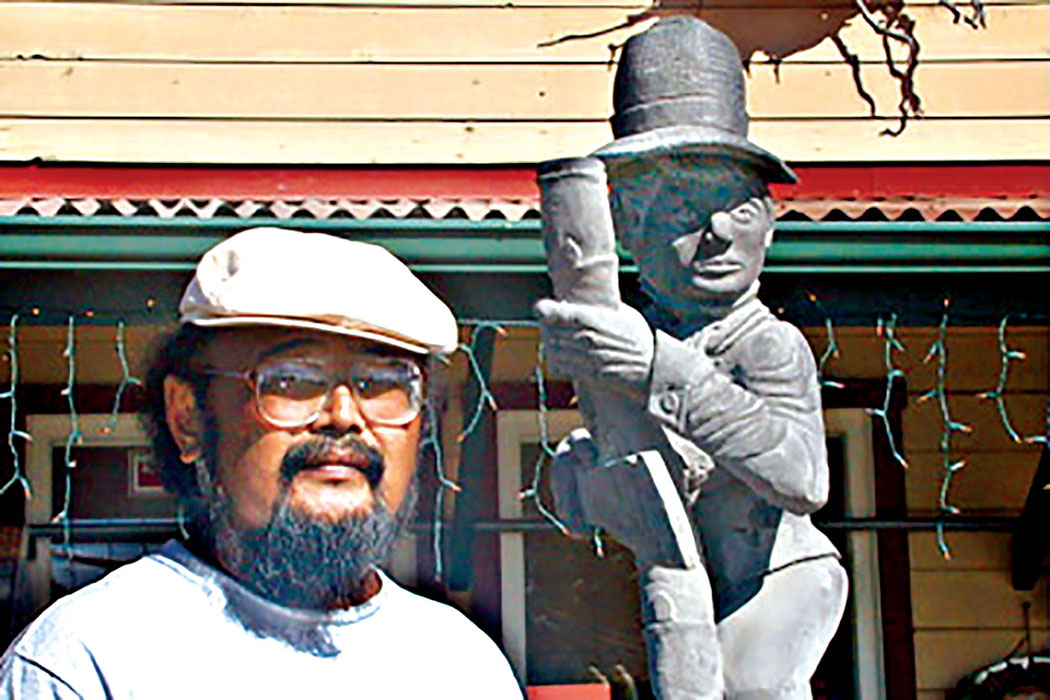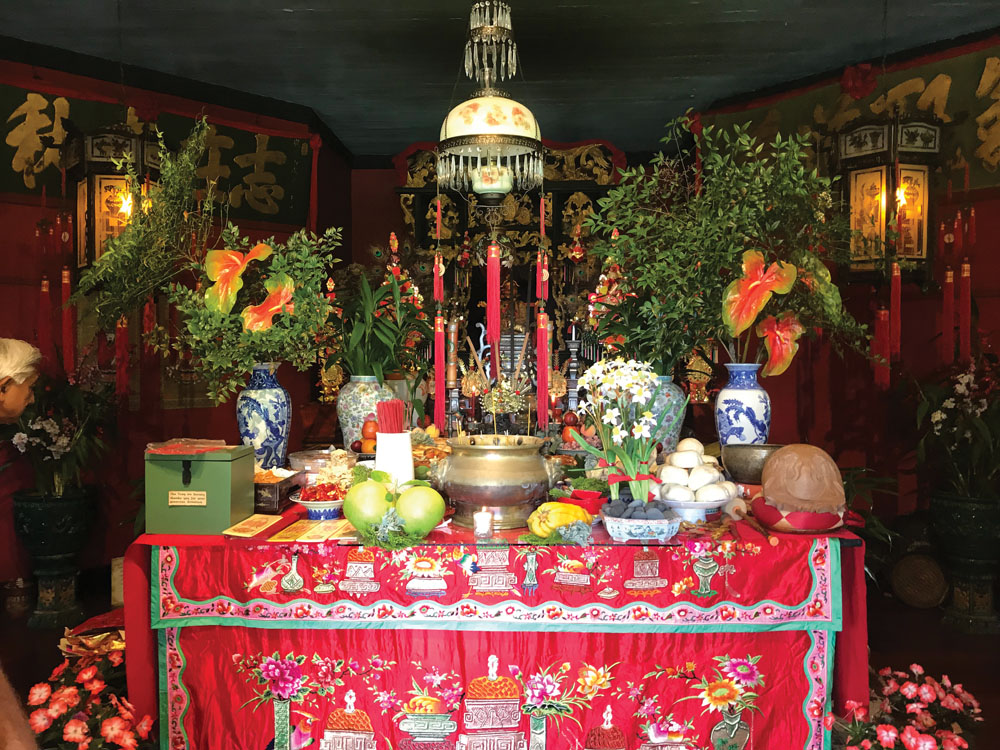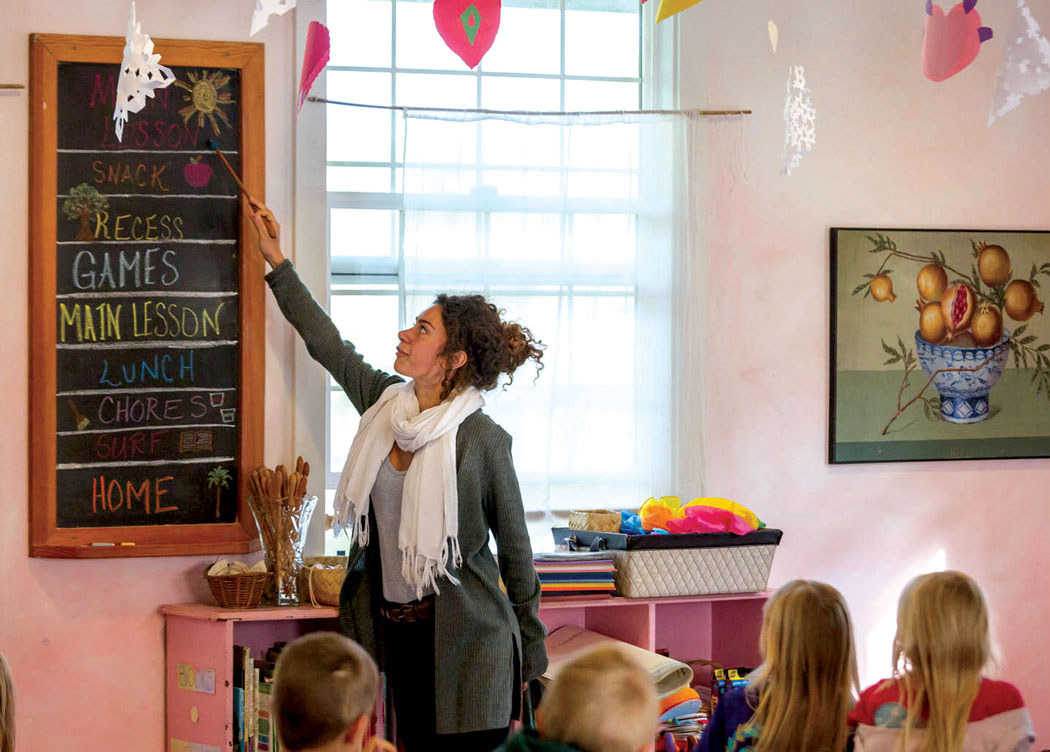
Mālamalama and Kona Pacific Celebrate 100 Years of Waldorf Education

By Karen Rose
On September 19, 2019, Waldorf education proudly marked its 100-year anniversary worldwide. The first Waldorf school was founded in Stuttgart, Germany in 1919 and is based on the educational philosophy of Austrian social reformer, Rudolf Steiner. Today there are more than 1,100 Waldorf schools and nearly 2,000 Waldorf kindergartens in more than 80 countries. Hawai‘i Island is fortunate to have Mālamalama Waldorf School in Kea‘au, and Kona Pacific Charter School in Kona.
Mālamalama Waldorf School
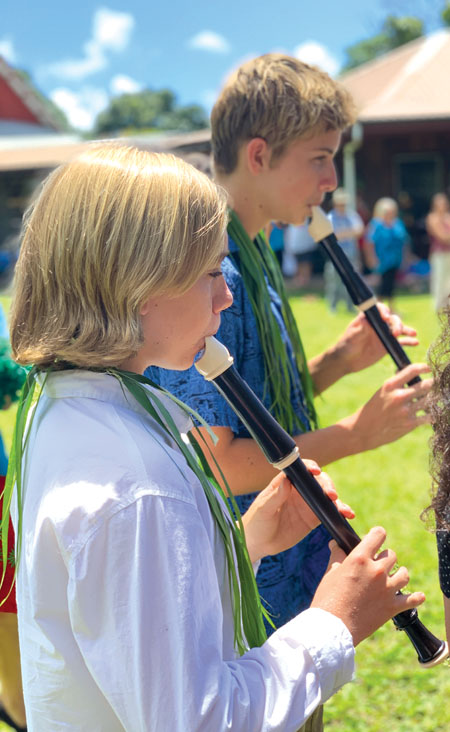
Founded by Donna Newberg and David Gradwohl in 1978, Mālamalama Waldorf School (MWS) is a non-sectarian accredited school located in Kea‘au in East Hawai‘i. Recognizing the need for a school that focused more holistically on child development, the school was founded on the commitment to educate the healthy growth of body, mind, and spirit.
“Mālamalama” means “the light of knowledge,” and today the school has grown from its humble beginnings in ‘Opihikao to a thriving, shining gem that sits upon a 20-acre parcel in Hawaiian Paradise Park, thanks to the generosity of co-founder David Watumull.
“Waldorf offers a very holistic approach to education,” said Karen Rose, a longtime teacher at MWS (not related to this writer). “We incorporate all areas of art, music, drama, poetry, movement, and dance, and weave them into the academic curriculum.”
Up to the age of seven, Waldorf curriculum focuses on the physical growth of the child. Learning is combined with physical activity and the teaching of positive habits for a healthy environment. After the age of seven, a love of learning is nurtured through instilling a strong sense of belonging, and respect for one’s teachers, friends, and ‘ohana.
“One unique characteristic of Waldorf education is our teachers aspire to carry their class from first through eighth grade,” said Karen. “Teachers better understand their students’ challenges, strengths, and learning styles. They bond together as a family and support one another through all of lifeʻs experiences.”
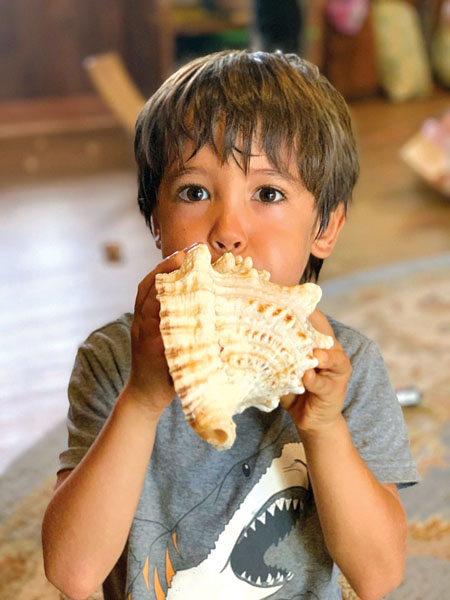
Waldorf curriculum is unique in many ways. It is designed to meet the specific developmental milestones of children at each age and grade. At MWS, educators are dedicated to cultivating a sense of wonder and inspiring students to view the world with wonder and purpose. By focusing on the specific needs of each stage of childhood development, they aim to encourage children to become lifelong learners.
“Waldorf education is very child-oriented,” explained Karen. “Our curriculum follows the development of the child, and recognizes where they are developmentally. We recognize the individuality of each child and where their skills and challenges lie.”
By balancing artistic and academic education, MWS educates and nurtures the whole child, both intellectually and emotionally. The developmentally-oriented curriculum incorporates the arts and the imagination with academics and a sense of responsibility for the environment and humankind.
“Waldorf education promotes critical thinking, not just memorizing an answer and repeating it back,” said Karen. “An example would be presenting science through observation and experimentation. This allows the children to think through experimentation, discover natural law, and become true scientists rather than giving them the expected outcome first.”
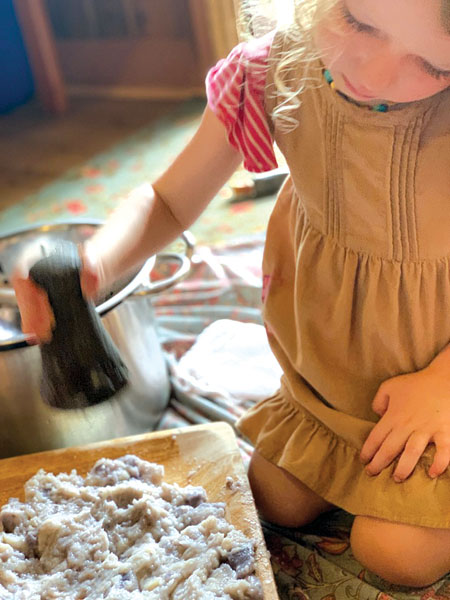
Waldorf education gives children an inner confidence. Students are encouraged to speak about their thoughts and share their mind. They go into the world with a confidence and clarity of thought, because they are able to think about things with an open-minded point of view. Students go on to be successful and confident human beings.
“Waldorf education provides our students with a foundation for success in whatever field they choose later in life,” said Kelley Lacks, MWS school director. “We know that education is more than the acquisition of information, curricular standards, and testing scores. I find Mālamalama Waldorf School to be more than a school of learning; itʻs a place to find your ‘ohana.”
MWS recently received a generous donation from a Japanese family who visited the school several years ago. “The Aihara family came from Japan to Hawai‘i,” Karen explained. “They were invited by our Japanese teacher to teach the game of GO and immediately fell in love with the children and our ‘ohana,” said Karen. “They donated $31,000 toward creating a GO multi-purpose space. This strategy game is the oldest board game continuously played in the world, originating in either China or Tibet 2500 years ago.”
The new building, Hale ‘O Aihara, will become the school’s GO room and library. Donations from Denji and Mitsuko Aihara, Tsuneji Iida, and Yukio Ohnishi, all of Japan, laid the groundwork. In 2018, the staff at Pōhakuloa Training Area donated, disassembled, and moved a pavilion they weren’t using anymore. Many more community efforts and donations went into clearing the site and preparing it for the building.
On September 19, 2019, Mālamalama Waldorf School celebrated its own 41-year anniversary, along with 100 years of Waldorf education, receiving a mayoral proclamation, blessing of the new building, and honoring of the Aihara family.
“Waldorf education is not only about teaching academics and arts, but is also about creating what we consider to be world citizens,” said Karen. “We work to build social and communication skills. We honor different cultures by learning about their belief systems and how they live. Through this learning, the children have opportunities to reflect about similarities and differences of other cultures. We honor our host Hawaiian culture by beginning each day with protocol and a rich Hawaiian Studies program.”
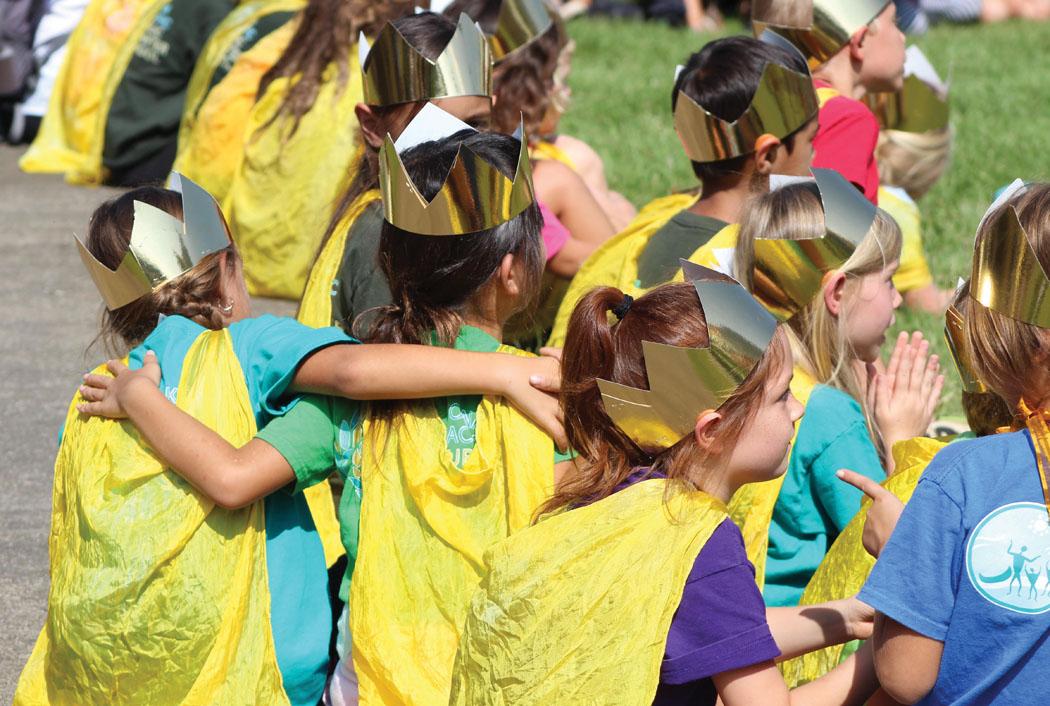
Kona Pacific Charter School
Founded in 2008 in Kealakekua, Kona Pacific Charter School curriculum is inspired by Waldorf principals, from kindergarten through 8th grade. The school is a member of The Alliance for Public Waldorf Education. Their educational program weaves together Hawaiian cultural knowledge and sustainable agriculture. Offering a holistic, project-based education, their educational program promotes student education in language arts, math, science, visual arts, foreign languages, musical training, and movement.
“Waldorf education is unique in the way it delivers the education,” said Greg Learned, vice principal at Kona Pacific. “One of the core values of Waldorf education is learning by doing. It’s a very hands-on type of education. Waldorf education embraces the whole child, heart, hands, and mind.”
One of the Waldorf methods employed by Kona Pacific is the use of what they call the main lesson block. The main lesson is a two-hour period of time set aside each day in which the class teacher leads the students in studying a specific subject for a three to four-week block. Waldorf classes around the world follow this curriculum. For example, in fourth grade, students may do a block on Norse mythology, during which time they will hear stories and complete projects related to the subject matter. They also create their own textbooks.

photo courtesy of Kona Pacific Charter School
“Every student makes a book about the subject they’re learning about in that block,” said Greg. “They will write and illustrate it themselves, so at the end of each block they have this main lesson book to take home with them. It’s a way to show that they’ve actually experienced this education, versus just reading something and taking a test on it. After a number of years in Waldorf schools, the students have a large collection of books they’ve made themselves.”
In addition to core academic subjects, students also learn to knit, sew, model with clay, work with wood, plant and tend a garden, play a stringed instrument, recite poetry, paint, sing, and act in plays. The school considers the arts to be equally important as traditional academic subjects for every child’s development, and incorporates them into all aspects of learning. Kona Pacific also places a strong emphasis on cooperation.
“Waldorf has a very clear philosophy about working together,” explained Greg. “The students get an opportunity to develop their social and emotional knowledge through positive behavior support and encouraging them to work together cooperatively. There’s a real emphasis on cooperation.”
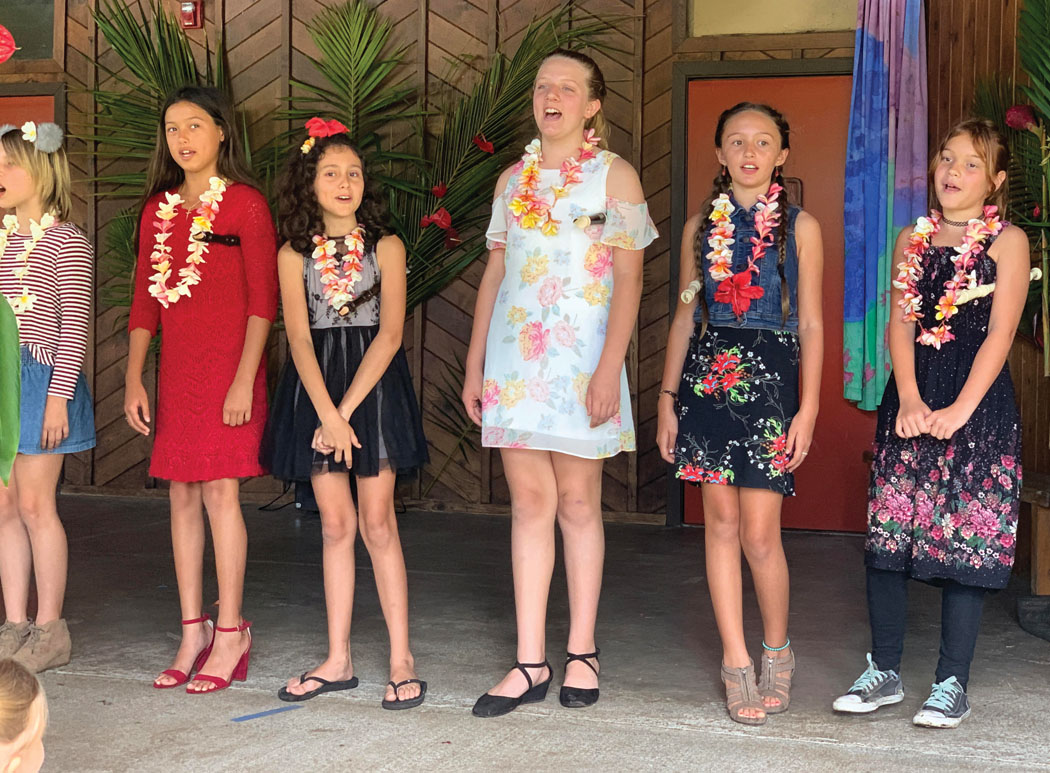
Greg explained how Waldorf’s three Rs are rhythm, repetition, and reverence. He described how the school creates a rhythmic approach to educating children found at both Mālamalama Waldorf and Kona Pacific.
“Festivals are one way we create rhythm and showcase what weʻve been doing,” he said. “For example, we had a festival at the end of September called our Festival of Strength and Courage. Waldorf schools around the world celebrated this same festival on the same day. It is a festival where everyone has to find the way to tame their inner dragons. We have a giant dragon costume the students dress up in. The entire sixth grade fit inside it!”
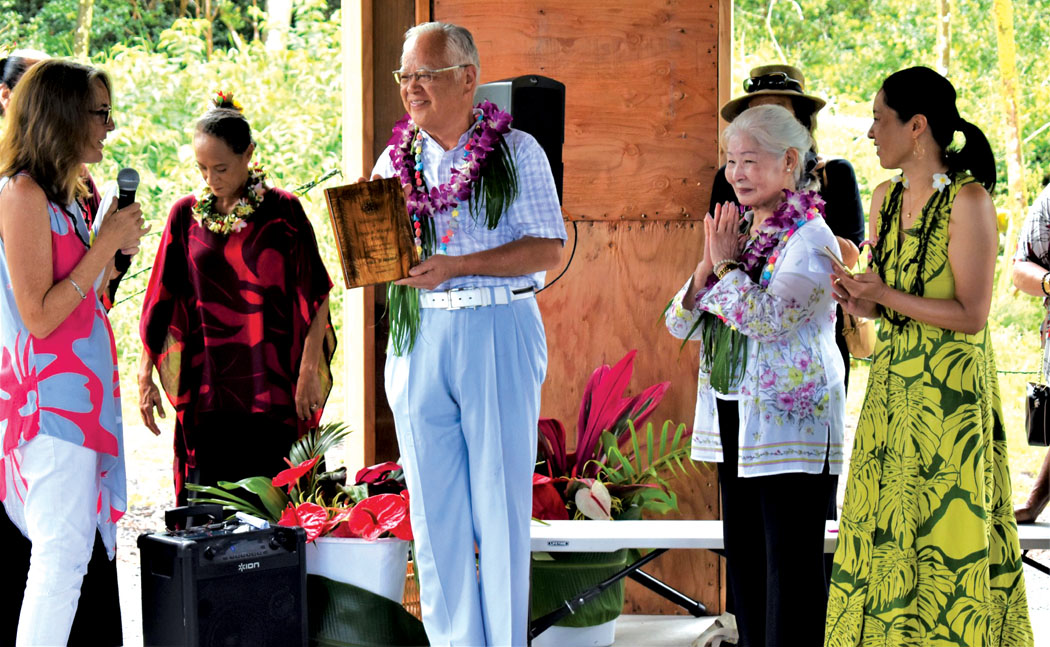
Greg also feels the holistic, open-minded education his students receive at Kona Pacific gives them unique skills that often help them succeed in college.
“Waldorf students tend to do very well in college,” he said. “Waldorf education creates free-thinking human beings. Because our curriculum has a very imaginative and creative approach, we tend to see students graduate with a real love of learning. Students have a greater tendency to enjoy learning and want to continue learning more. It also teaches them to think outside of the box, so they tend to be more creative in the way that they approach problems and situations.”
Waldorf founder Rudolf Steiner eloquently expresses his educational philosophy when he said, “Accept the children with reverence, educate them with love and send them forth with freedom.” ❖
For more information: hawaiiwaldorf.org, kppcs.org
